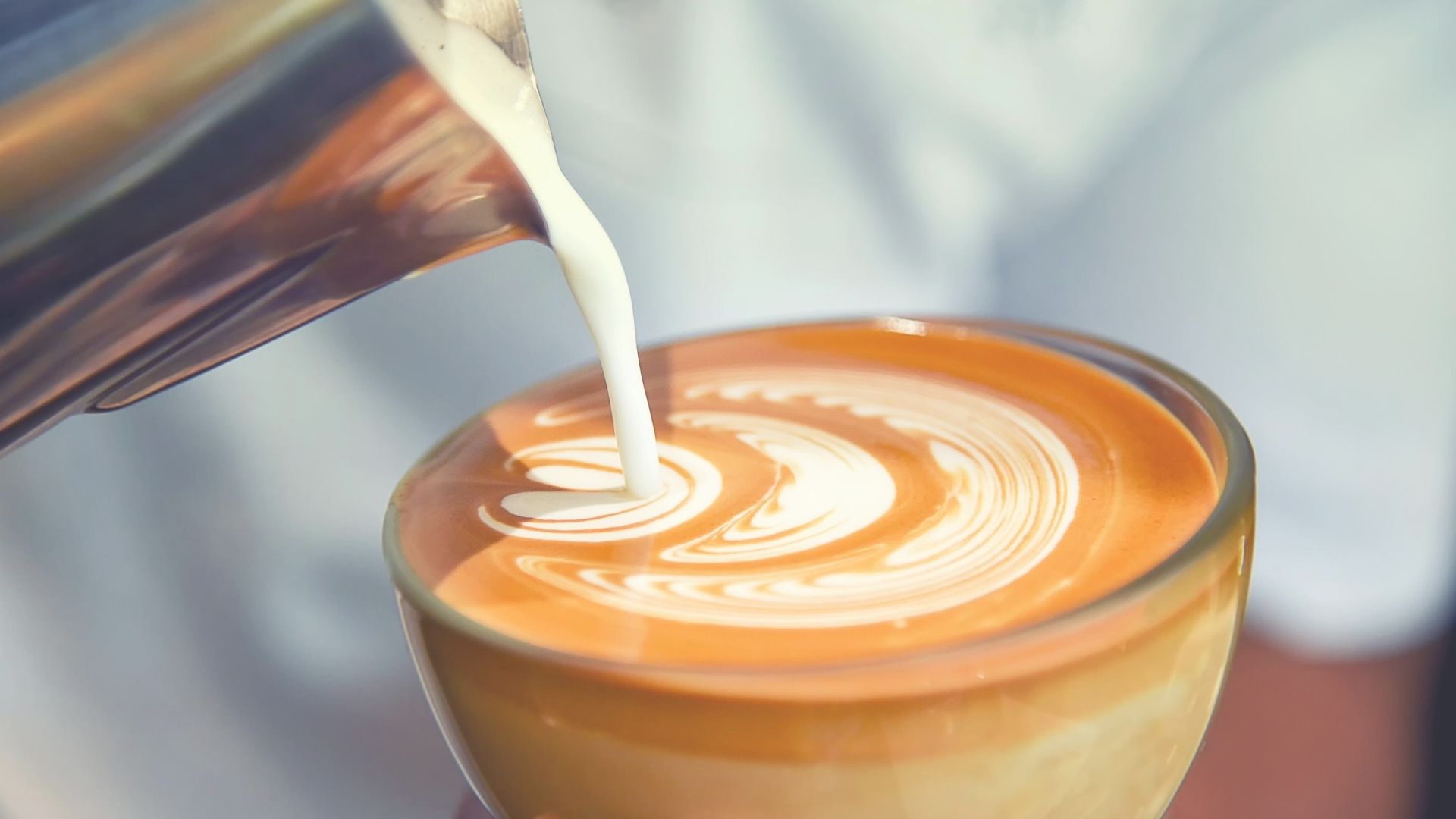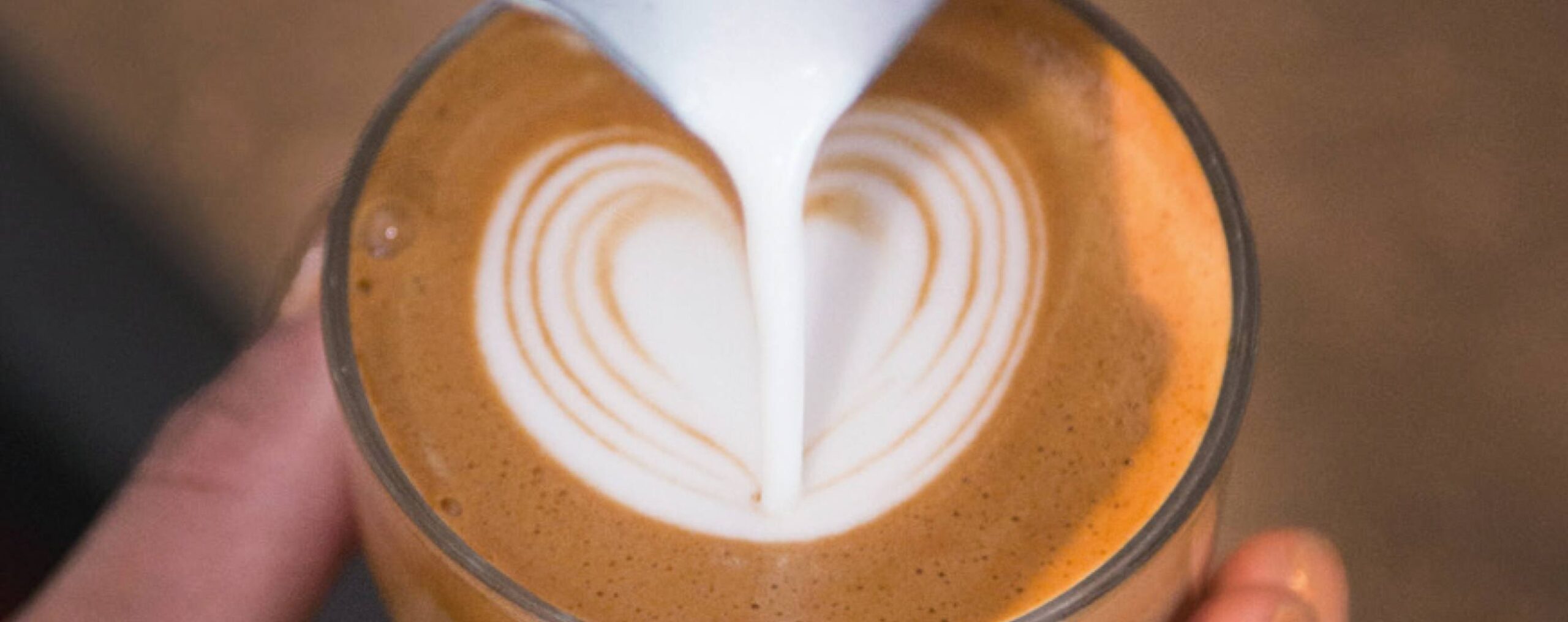Latte art is one of the most recognisable symbols of coffee culture. Research shows that the number of “photogenic” coffee posts on Instagram have increased by 4,500% since 2015 – and a significant number of these feature the #latteart hashtag.
However, as many baristas know, latte art is an endeavour that requires much more than an understanding of social media. It takes skill and plenty of practice to master the skill of pouring it.
But where did it come from? And how long has it been around? To learn more about the history of latte art, read more about it below.
WHEN DID LATTE ART FIRST APPEAR?
To trace latte art back to its origins, we have to start by looking at steam.
The first steam wand included on an espresso machine was in 1901, when Luigi Bezzera developed one for his prototype machine.
Five years on, in 1906, Desiderato Pavoni purchased the steam wand patent from Bezzera. This led to the first commercially available espresso machine with a built-in steam wand: the Ideale Pavoni. These machines were capable of extracting espresso and steaming milk at the same time, thanks to the high amount of pressure.
Although the practice of steaming milk has been around since the late 19th century, it actually took another few decades for latte art to emerge. There were early reports of it in northern Italy, but most industry professionals agree that Espresso Vivace in Seattle, US was the real birthplace.

David Schomer is the co-owner of Espresso Vivace. He explains how latte art started to gain popularity in the 1980s.
“We had an espresso cart on 5th & Union Street in Seattle and our manager was raised in northern Italy,” he says. “We started pouring patterns and he said, ‘I haven’t seen this since I was a child in the hills above Turin.’ He said they called the pattern a ‘rosetta’.”
David later opened Espresso Vivace in Seattle, and focused on increasing the capacity to train more baristas and produce high-quality latte art. He tells me about some of the prominent baristas who helped shape the most recognisable patterns we now see in specialty coffee shops.
“In 1988, Sarah Hunting poured against the back of the cup to make a bee shape,” he says. “In 1989, Lisa Persons learned how to pour a perfect heart, and then I developed the rosetta later.
After that, latte art became a worldwide artisan signature for people trying to make coffee a culinary art.”
THE SCIENCE BEHIND LATTE ART
Although the coffee sector might have changed significantly since the 1980s, the skills needed to create latte art have largely remained the same.
By incorporating the right amount of air into the milk, the liquid can be “stretched” as it expands in volume. “Baristas should stretch and roll the milk at the right pace, otherwise the milk will contain air bubbles that are either too big or too small”.

When the steam wand is placed at the optimal angle and depth under the surface of the milk, proteins and fats work together to trap small air bubbles within the liquid. This creates what is known as microfoam. Ideally, the trapped air bubbles shouldn’t be too big or too small to give the milk a smooth texture and a glossy finish.
David notes that a good shot of espresso and high-quality milk are both vital to producing high-quality latte art.
“You must have thickly-textured espresso and fresh milk,” he says. “You can have a perfect espresso machine, but it could still mean bad latte art. It’s mostly down to the skill of the barista.”
“When you start making latte art it is important to fully master the basic technique,” she tells me. “Many baristas start with complex cups, but then find that they don’t have the right foundations to move forward and develop their skills.”
FROM “SPECIAL” TO SPECIALTY
It often takes years for baristas to hone their latte art skills. Pouring symmetrical, high-contrast designs with clean, crisp lines takes plenty of practice and patience.
However, David says that around the turn of the 21st century, there was an overwhelming surge in quality from East Asia in particular.
“When I first saw the latte artists coming out of Taiwan, Japan, and Korea I was blown away by the quality,” David tells me. “It was when I was judging contests in the early 2000s that I noticed that more high-quality latte art was being produced.”
However, around the same time, similar high-quality latte art was becoming more popular in cafés throughout Scandinavia, Australia, and New Zealand.

Rising consumer interest
One of the reasons that latte art has been so appealing to both consumers and café owners is that it indicates the level of precision and care the barista has exercised.
“It’s a good way to attract customers and build their interest. Before they are ready to learn more about coffee, they keep coming back to take pictures of latte art.”
She adds that as the specialty coffee sector grows, so does the consumer demand for high-quality latte art. And while intricate designs on lattes and flat whites may not make or break a business, they certainly help attract the interest of customers.
The proliferation of latte art pictures on social media platforms (notably Instagram) has helped to drive this trend, too. She adds that as technology improves and more baristas are able to refine their skills, the bar for quality naturally raises.
“The development of espresso machine technology has greatly improved the barista’s ability to make milk even more suitable for latte art. Manufacturers carry out many tests on steam wands to improve performance.”
Online education helps baristas learn how to improve their skills: “Access to resources, like online tutorials, makes it easier to learn, as do more consistent and stable machines.”

WHAT’S THE FUTURE FOR LATTE ART?
As with many areas of specialty coffee, the quality of latte art is always improving, and more and more people are innovating across the board.
“Latte art has become much more complicated, realistic, and detailed,”. “When I first started as a barista, cat or bear designs were considered creative, but now you can see birds, koalas, and giraffes.”
Some of the more complex and creative latte art designs have been popularised through competitions – most notably the World Latte Art Championships.
Here, competitors receive higher marks based on the detail and creativity of their designs – leading to some truly impressive latte art patterns.
Manuela won the 2019 World Latte Art Championships with a parrot design. “Since I started training in 2017, pouring techniques have changed a lot and the quality level has risen a lot in a short time,” she says. “Now latte artists use the pitcher like a pen.”
However, it takes a lot of training and patience to reach the skill levels seen in competitions. David provides some advice for those looking to develop their skills.
“The idea is to capture the flow of the design. You’re trying to design a still image with this in mind.
“When I train people, I tell them to focus on making the design beautiful by focusing on the flow of the milk. It’s theatrical; it’s performance art.”
David’s advice emphasises that overthinking can often be detrimental when pouring latte art. Focusing on controlling the flow of milk from the pitcher – rather than attempting to pour more detailed patterns – may lead to more success.
And while every barista has their own way of learning, being confident with your espresso machine is key. Learning more about how to control the quality of your milk will only help enhance the latte art.
Font: https://perfectdailygrind.com/2022/01/understanding-the-history-of-latte-art/



